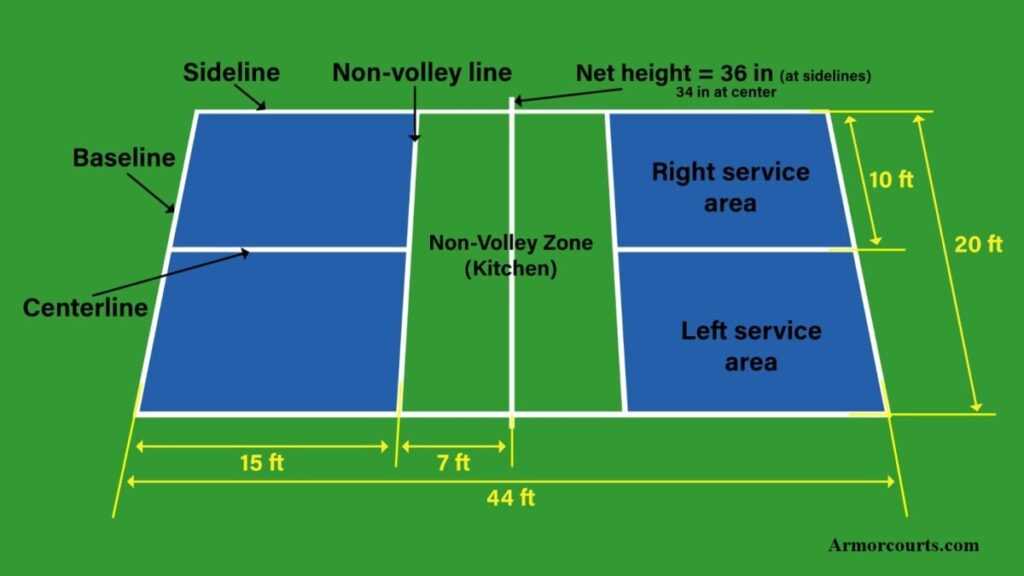Pickleball Court Construction-- Professional Installment for Your Desire Court
Pickleball Court Construction-- Professional Installment for Your Desire Court
Blog Article
Lasting Practices in Pickleball Court Building And Construction You Need To Know
As the popularity of pickleball proceeds to increase, so as well does the demand for lasting practices in court construction. The effect of these practices expands much past the court itself.
Choosing Eco-Friendly Materials
Selecting environmentally friendly products is an essential action in the building and construction of sustainable pickleball courts. The selection of lasting materials not just decreases ecological effect but also improves the longevity and performance of the court. Trick materials include recycled rubber for the surface area, which offers excellent resilience and shock absorption while drawing away waste from landfills.
In addition, utilizing in your area sourced materials reduces transport discharges and sustains regional economic climates. Pickleball court construction. As an example, making use of native woods for secure fencing and seating can give a lasting visual while making certain durability versus the elements.
Incorporating absorptive materials for court structures can even more add to sustainability by permitting all-natural water drain and reducing overflow. These selections not just secure regional communities yet additionally promote much healthier play environments.
Efficient Drainage Solutions
While the choice of environmentally friendly products is vital, carrying out efficient water drainage services is just as critical for maintaining sustainable pickleball courts. Appropriate drainage not just shields the court surface area from water damages but likewise decreases erosion and overflow, advertising environmental integrity.
Effective drain systems can include permeable paving, which permits water to infiltrate the ground instead of merging externally. This lowers the probability of standing water, which can cause mold and various other maintenance concerns. Furthermore, including purposefully placed water drainage channels and swales can direct excess water away from the court location, making sure a dry playing surface area and protecting against soil disintegration.
Using native greenery in the landscaping around the courts can additionally improve water drainage by absorbing excess water and decreasing drainage. These plants need less irrigation and advertise biodiversity, lining up with sustainable techniques.
Moreover, it is crucial to regularly preserve the drain system to guarantee its long-lasting performance. This consists of cleaning particles and surveillance for blockages. By focusing on efficient drainage remedies, pickleball court constructors can substantially add to the sustainability and long life of the center, ultimately benefiting both gamers and the atmosphere.
Energy-Efficient Lights Options
As the need for pickleball continues to grow, integrating energy-efficient lighting alternatives into court design has become increasingly crucial for sustainability. Conventional lights systems commonly eat too much energy, adding to greater operational costs and ecological effect. As a result, adopting modern-day, energy-efficient modern technologies is important for both new buildings and restorations.
LED (Light Emitting Diode) lighting stands recommended you read out as a premier option as a result of its long life and energy savings (Pickleball court construction). Compared to traditional lights, LEDs use about 75% less power and can last up to 25 times much longer, significantly decreasing upkeep costs. Furthermore, the directional nature of LED illumination minimizes light contamination, making certain that lighting is concentrated on the court rather than surrounding locations.
Lasting Surface Alternatives
Discovering lasting surface area choices for pickleball courts has actually obtained traction amongst building contractors and players alike. The focus on green products not just straightens with the expanding environmental recognition but additionally enhances the performance and toughness of the courts.
One preferred choice is making use of recycled rubber, which can be sourced from used tires. This material offers superb shock absorption, decreasing the danger of injuries for gamers while advertising sustainability. Furthermore, modular floor tiles made from recycled plastics use an additional sensible choice. These floor tiles are simple to set up and replace, and their adaptability permits for different court configurations.
All-natural turf courts are also arising as a sustainable option, promoting biodiversity and lowering the heat island effect. They need regular maintenance and click this link water, which might not straighten with all sustainability goals.

Water Preservation Strategies

One more effective strategy involves the setup of rain harvesting systems. These systems gather and save rain for usage in maintaining court surface areas and landscaping. This technique not just conserves potable water however additionally minimizes dependence on community sources.
In addition, utilizing drought-resistant landscape design around the courts is vital. Indigenous plants need much less water and are much better adjusted to regional climate problems, therefore reducing general water usage. Additionally, utilizing efficient irrigation systems, such as drip irrigation, ensures that water is supplied straight to plant origins, lessening dissipation and waste.
Final Thought
Including lasting methods in pickleball court construction considerably adds to ecological preservation and source effectiveness. Using environment-friendly materials, implementing reliable drain remedies, and embracing energy-efficient lights alternatives can greatly lower More about the author ecological effect. Discovering lasting surface choices and employing water preservation methods boost the overall sustainability of these recreational facilities. By prioritizing these practices, the construction of pickleball courts can straighten with more comprehensive ecological objectives while promoting durability and performance within neighborhoods.
As the popularity of pickleball proceeds to increase, so also does the requirement for sustainable practices in court construction.Selecting environment-friendly products is a critical step in the building of sustainable pickleball courts. By focusing on energy-efficient illumination options, pickleball court producers can contribute to a much more lasting future while meeting the needs of players and stakeholders alike.Including sustainable surface choices not only improves the efficiency of pickleball courts but likewise paves the means for carrying out effective water preservation methods.Including sustainable practices in pickleball court building and construction dramatically contributes to ecological preservation and source efficiency.
Report this page